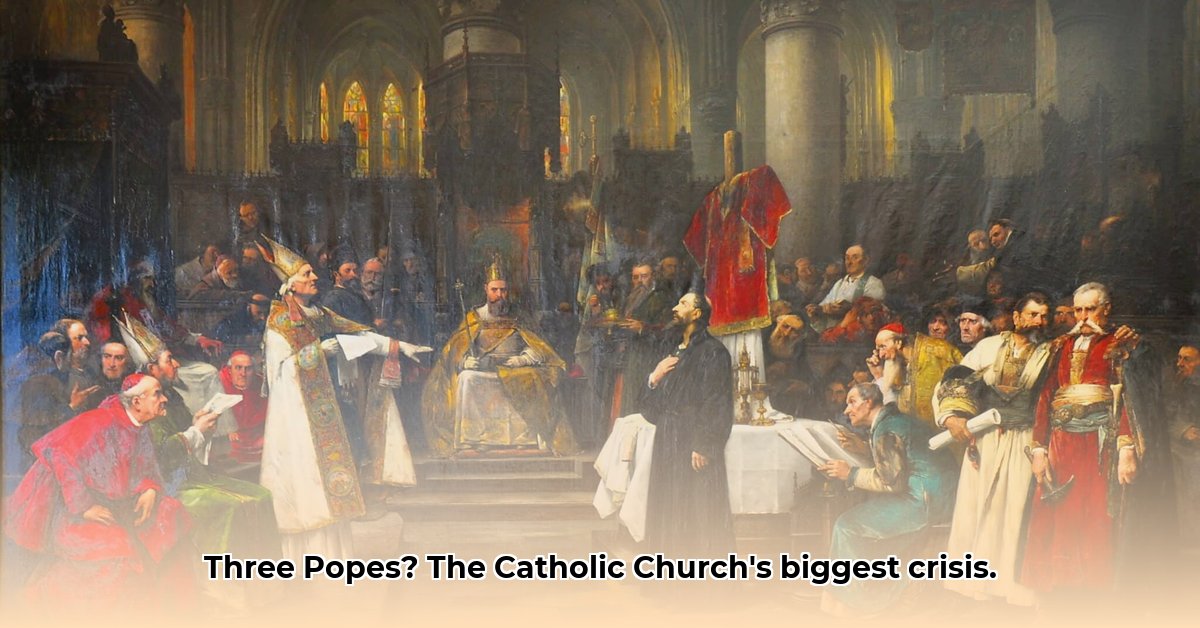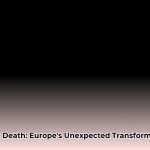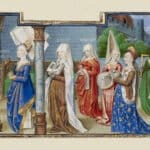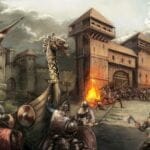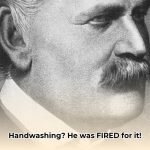Imagine the Catholic Church with three simultaneous popes. Almost impossible to fathom, isn’t it? Yet, this is precisely what transpired during the Western Schism, a tumultuous episode in the late Middle Ages. The devastating impact of the Black Death further destabilized Europe. More than a mere disagreement, it was a large-scale crisis fueled by political power struggles, clashing religious views, and widespread unrest across Europe. This account dissects the saga of the rival popes, their supporters, and the pivotal Council of Constance that ultimately resolved the conflict. Explore not only what happened, but also why it happened, and the profound and lasting impact it had on the Church and European society.
The Western Schism: A Church Divided
The late 14th and early 15th centuries witnessed a significant fracture within the Catholic Church known as the Western Schism. For nearly four decades, instead of a single, universally recognized pope, multiple figures simultaneously claimed to be the rightful head of the Church. This era was marked by chaos, confusion, and intense conflict. It began with a convergence of factors that created a perfect storm of challenges within Christendom.
A Perfect Storm: Seeds of Discontent
Prior to the Schism, the Church faced serious issues, including accusations of corruption and financial mismanagement. The Avignon Papacy (1309-1376), when the Pope resided in Avignon, France, rather than Rome, fueled doubts about papal legitimacy. This relocation, coupled with the political machinations of powerful nations and growing discontent among Church officials, created a tense and unstable environment.
The central issue revolved around power struggles between factions within the Church, particularly those aligned with France and Italy. National pride played a significant role, with each nation seeking to exert influence over the papacy. It was a high-stakes political game where the spiritual leadership of Western Europe was the prize.
Two Popes Become Three: A Crisis of Authority
The crisis deepened after the death of Pope Gregory XI in 1378. His successor, Urban VI, quickly became a controversial figure. Many French cardinals opposed him, leading them to elect their own pope, Clement VII, who established his court in Avignon. Suddenly, two popes claimed legitimacy, dividing the Church into opposing camps, with different countries and regions pledging allegiance to each.
The situation escalated further. After Clement VII’s death, the French cardinals elected another pope, Benedict XIII. Now, the Catholic world faced the unprecedented situation of having three claimants to the papacy. The very foundations of religious law and divine authority were questioned. Ordinary people were left bewildered, and the crisis severely undermined the Church’s spiritual authority.
This was more than just an internal Church squabble: it had far-reaching social and political consequences. Families were divided, and entire nations took sides, creating deep divisions and animosities. The faithful were perplexed, and the foundations of faith were shaken for many.
Paths to Resolution: The Council of Constance
Numerous attempts were made to resolve the schism through diplomatic negotiations and papal decrees, but these efforts largely failed. Both sides remained entrenched in their positions, prolonging the crisis.
Finally, in 1414, the Council of Constance convened. This gathering of Church leaders from across Europe took the bold step of deposing all three popes: Gregory XII (who had willingly abdicated), Benedict XIII, and the Pisan Pope John XXIII. This decisive action paved the way for the election of Martin V as the sole, universally recognized pope in 1417. The Schism subsided, and a semblance of unity was restored to the divided Church.
The Schism’s Lingering Effects: Shifting Power Dynamics
The Western Schism had profound and lasting consequences. It fueled growing skepticism toward papal authority, weakening the Church’s overall influence. National governments began to exert greater control over religious affairs within their territories, altering the balance of power between Church and state. The concept of conciliarism – the belief that Church councils held supreme authority, even over the pope – gained traction.
The effects extended beyond the spiritual realm. Communities and nations were torn apart by competing allegiances. The Schism left a lasting legacy that reshaped the relationship between the Church and secular powers in Europe.
Key Figures and Events: A Summary
| Pope/Antipope | Years Active | Location | Significance |
|---|---|---|---|
| Gregory XI | Died 1378 | Rome | His death created the crisis that led to the Schism. |
| Urban VI | 1378–1389 | Rome | Elected Pope, but challenged by French cardinals due to his controversial style. |
| Clement VII | 1378–1394 | Avignon | Elected as a rival Pope, initiating the dual papacy. |
| Benedict XIII | 1394–1417 | Avignon | Succeeded Clement VII as antipope, prolonging the Schism. |
| Gregory XII | 1406–1415 | Rome | Resigned to help resolve the Schism at the Council of Constance. |
| John XXIII | 1410-1415 | Pisa | Elected by the Council of Pisa, but later deposed at the Council of Constance. |
| Martin V | 1417–1431 | Rome | Elected at Council of Constance, ending the Schism. |
The Western Schism remains a pivotal and dramatic chapter in Church history. It serves as a reminder of how internal conflicts, political maneuvering, and national rivalries can shake even the most powerful institutions. It fundamentally reshaped the relationship between the Church and the secular world, leaving an indelible mark on Christianity and European civilization. Historians and theologians continue to study and debate its causes and consequences.
The Impact on European Politics
The Western Schism (1378-1417), a period when multiple popes vied for legitimacy, had a profound impact on the political landscape of Europe. Loyalties shifted, alliances fractured, and nations leveraged their papal allegiances to advance their own interests.
Seeds of Discord: The Erosion of Authority
The Schism’s origins lay in the Avignon Papacy (1309-1376), when the popes resided in France rather than Rome which undermined papal authority. Pope Gregory XI’s return to Rome in 1376 did not resolve the underlying issues. His death triggered a power struggle, resulting in the election of two popes: Urban VI in Rome and Clement VII in Avignon.
A Continent Divided: Alliances Forged and Broken
The Schism shattered European unity. Nations aligned themselves with either the Roman or Avignon pope based on strategic considerations. France supported Clement VII, solidifying its influence over the papacy. England, however, sided with Rome, reflecting its ongoing rivalry with France. This division influenced alliances and military strategy, particularly during the Hundred Years’ War.
Draining Church Resources
The existence of multiple papal courts placed a strain on the Church’s financial resources. The need to support rival papal administrations led to increased taxation and growing discontent among the population, fueling criticisms of church authority.
The Council of Constance: A Turning Point
The Council of Constance (1414-1418) brought the Schism. Martin V was elected as the sole pope. However, the Council also empowered conciliarists, who argued that ecumenical councils held supreme authority over the pope – a direct challenge to papal power.
Lasting Legacies: The Foundation for Reform
The Western Schism eroded the authority of the papacy and contributed to doubts about the Church’s infallibility. This paved the way for secular rulers to exert greater control over religious affairs within their territories and contributed to the conditions that would eventually facilitate the Protestant Reformation.
Key Takeaways:
- The Western Schism divided the Catholic Church, with rival popes in Rome and Avignon.
- European nations aligned themselves with different popes based on political interests and rivalries.
- The Schism weakened the papacy’s authority and prestige.
- Supporting multiple papal courts placed a financial burden on the people, exacerbating social and economic tensions.
- The Council of Constance resolved the Schism but spurred debates about the power balance between the pope and ecumenical councils.
- The events of the Western Schism laid the groundwork for later religious reforms and the Protestant Reformation.
The Avignon Papacy’s Role in the Great Schism
Key Takeaways:
- The Great Western Schism (1378-1417) fractured the Catholic Church, with rival popes claiming legitimacy.
- The Avignon Papacy (1309-1376), where the papacy resided in Avignon, France, contributed to the schism.
- The schism undermined the Church’s authority.
- The Council of Constance (1414-1418) resolved the schism, but also saw conciliarism challenge papal authority.
- The schism shifted power within the Church and paved the way for future reforms.
Seeds of Discord: French Influence
The Great Western Schism stemmed from tensions in Europe. The Avignon Papacy played a crucial role. The popes, residing in Avignon, cultivated relationships with French monarchs, leading to accusations of undue influence over the papacy and fueling distrust.
The location change stemmed from the political climate in Italy. The prolonged stay in Avignon became a point of contention as the faithful complained. Many felt the papacy had become too worldly and entangled in French affairs. This perception eroded papal prestige and planted the seeds of future conflict.
The Schism Erupts
Following the return of the papacy to Rome in 1376, the election of Urban VI in 1378 plunged the Church into crisis. His abrasive personality prompted cardinals to elect a rival pope, Clement VII, in Avignon. Now there were two popes.
Later, a third papal line emerged from the Council of Pisa in 1409. Three competing popes vying for legitimacy split the Church.
The Council of Constance
The schism’s resolution came with the Council of Constance (1414-1418). This council asserted conciliar authority deposed the rival popes, and elected Martin V.
This council proved conciliarism, the idea that a general council held authority above the pope. This challenged papal supremacy. The lingering effects of the Avignon Papacy and its role in the Great Schism extended beyond papal unity. The event highlighted the dangers of entanglement between the Church and secular rulers, and the consequences of lost confidence.
Political and Economic Factors in the 14th Century Papal Crisis
Key Takeaways:
- The Avignon Papacy weakened papal authority, creating dissent.
- Political and economic factors fueled claimant rivalries.
- The contentious election of Urban VI triggered papal claims, escalating the crisis.
- Conciliarism challenged papal authority, opening debates.
- The Great Schism weakened the Church’s influence, contributing to disillusionment and paving the way for the Protestant Reformation.
The Avignon Papacy: Discord
The relocation of the papacy to Avignon (1309-1376) proved a pivotal moment. This period saw the papacy entangled with French interests, which diminished papal prestige. The perception of French influence corrupting the papacy created discontent.
A Contentious Election
The death of Pope Gregory XI in 1376 set the stage. The election of Urban VI proved unpopular among French cardinals. They claimed coercion influenced the election and chose Clement VII in Avignon. The Church had two popes.
National Interests
The conflict led to a political game. Nations aligned with either the Roman or Avignon papacy based on expediency. Italy supported Urban VI, while France championed Clement VII. England and Germany vacillated.
The Council of Pisa
Attempts to resolve the situation led to complications. The Council of Pisa (1409) sought to address the problem, resulting in the election of another pope, Alexander V. Now, there were three claimants.
The Legacy
The Great Schism left scars. This period revealed papal authority and exposed Church unity in the face of political interests. The crisis fueled calls for reform.
The Schism empowered conciliarism calling for a system of Church governance based on councils. The disillusionment laid the groundwork for the Protestant Reformation.
- Understand the Dunning-Kruger Effect: Why Incompetent People Think They’re Experts: Gain Self-Awareness - August 1, 2025
- Ignaz Semmelweis: The Doctor Fired for Handwashing: A Public Health Tragedy - August 1, 2025
- Unlock Your Memory: Spaced Repetition: The Scientific Trick to Remembering Information Forever: Learn Effortlessly - August 1, 2025
